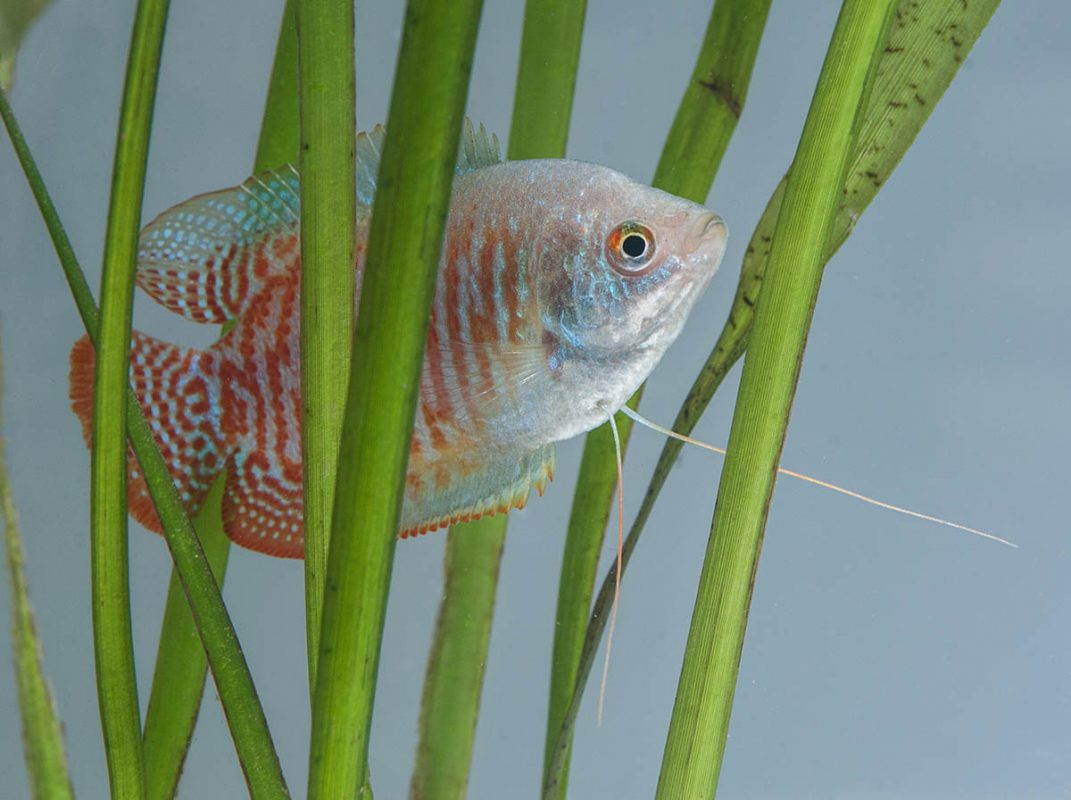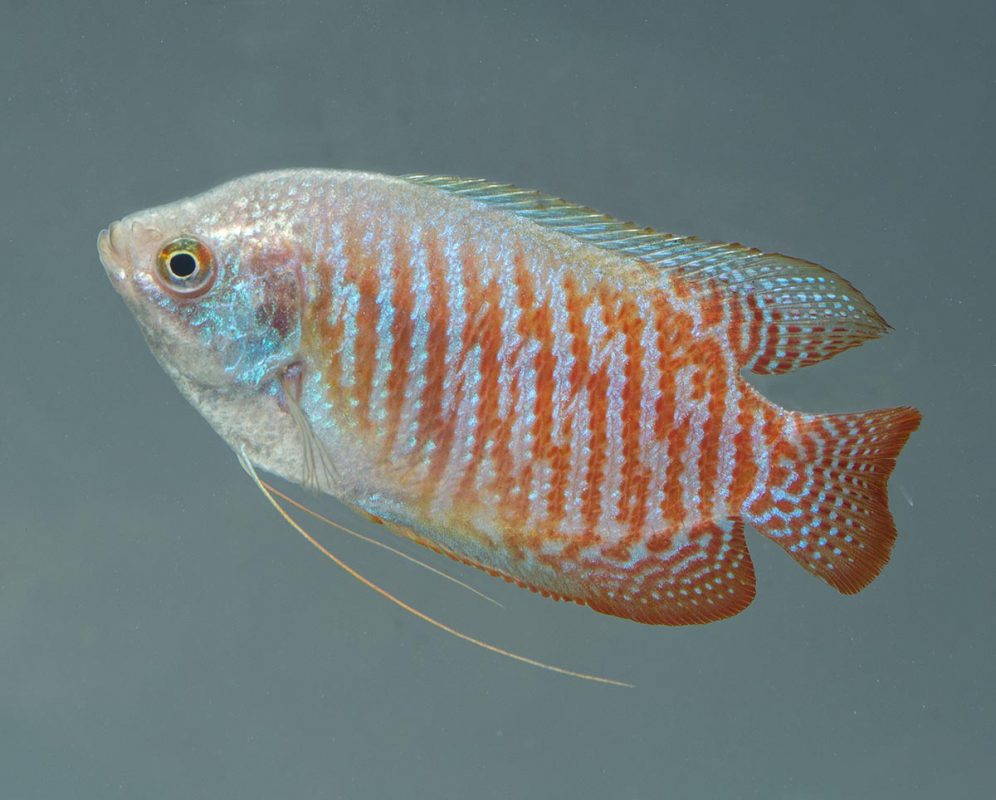Characteristics & Origin
Dwarf gourami are labyrinth fish and foam nest builders. They therefore lay their fertilised eggs in a foam nest that they have built in advance. The males alone build the nests and are responsible for brooding.
This gourami species is native to Southern Asia, or to be more specific, India. They are primarily found in rivers and the weedy waters of the Ganges and the Brahmaputra. Kept correctly, they can grow to 5 cm in length and live to be 4 years old. Dwarf gourami have a reddish base colour and turquoise, horizontal stripes all over their body. However, only the males have this striking colouring; the females are paler. Gouramis are now also found in several other colours.
Aquarium and water
The aquarium should have a volume of at least 60 litres. To create an appropriate habitat for dwarf gourami, we recommend a water temperature of 22 to 28°C. Furthermore, a slightly acidic to slightly alkaline pH value (approx. 6.0 – 7.5) is recommended. The water hardness should be 4 – 10°dGH. The fish also dislike a strong current in the tank.

Keeping conditions
Trichogaster lalius should ideally be kept in pairs. Their quiet and peaceful nature makes them very well-suited to community tanks. However, they should only be kept with other peaceful species and not with aggressive or fin-nibbling fish. Like with all foam nest building fish, the female is usually banished once she has laid her eggs. Gouramis prefer the upper to middle regions of the aquarium.
Planting and decoration
Dwarf gouramis prefer aquariums with abundant, densely planted vegetation as well as floating plants. The aquarium should also contain plants that reach the surface of the water to make it easier for the fish to build foam nests. A dark substrate is also recommended as this sets off the gouramis’ colours even better.
Diet
Dwarf gouramis are omnivores but prefer high-quality flake food like TetraMin or TetraPro Menu. To add variety, the fish should also be occasionally given plant-based food, such as TetraPro Algae.

